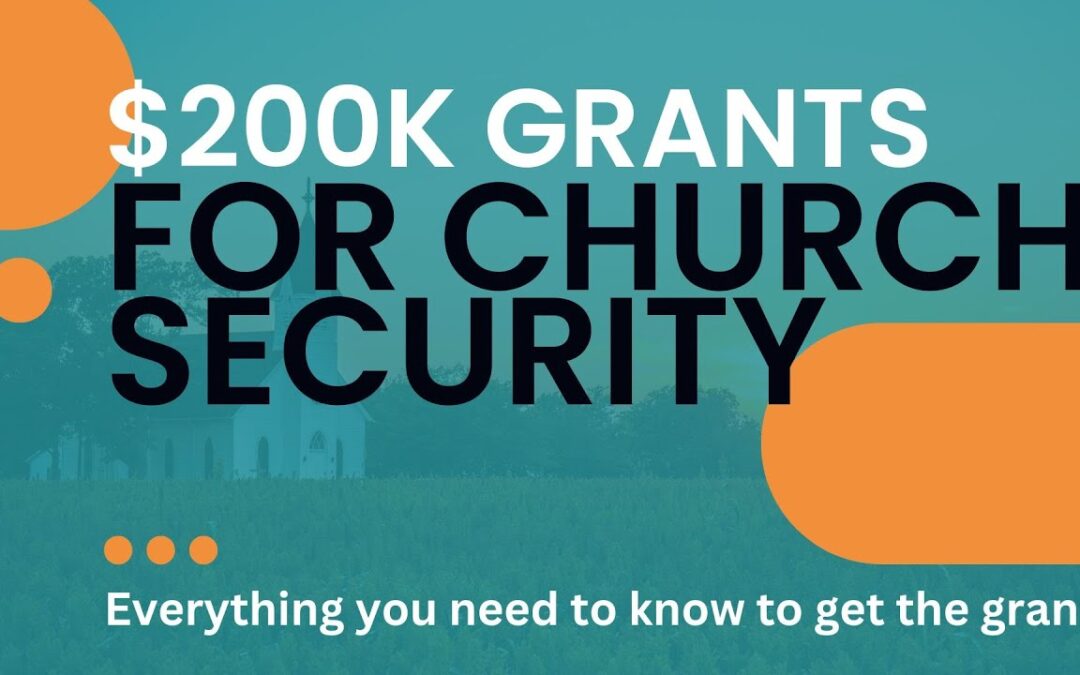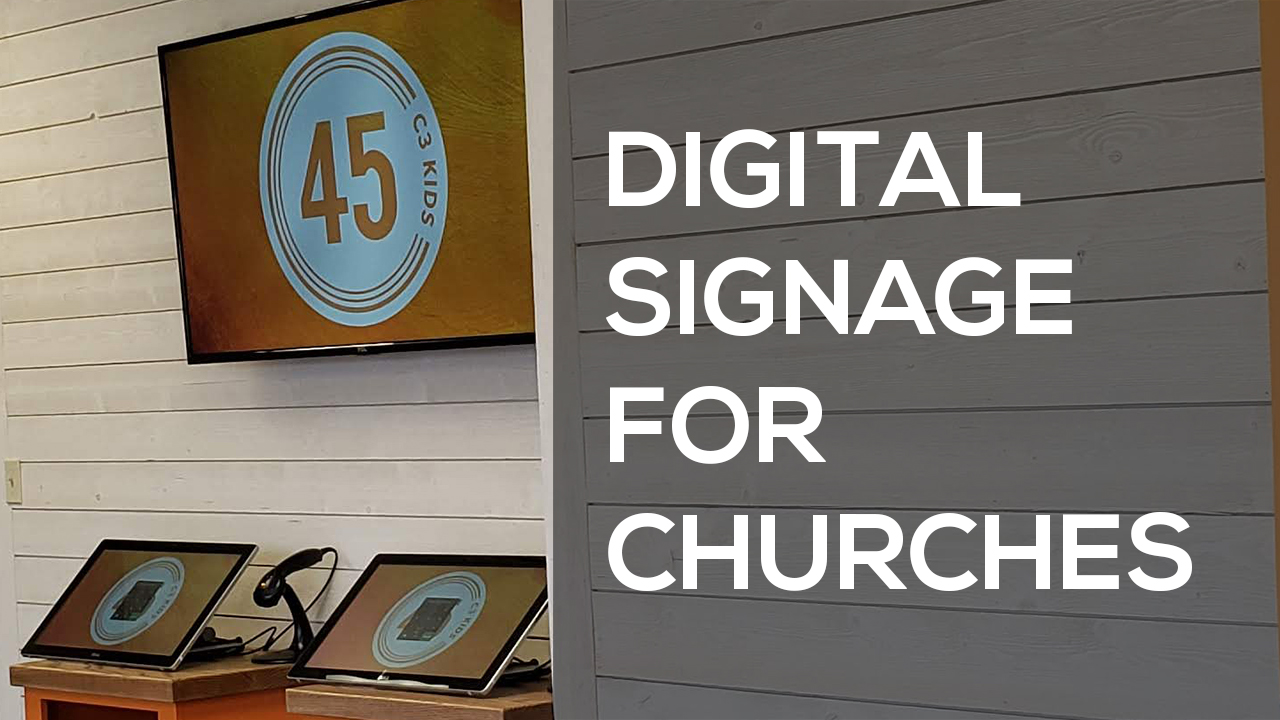The Nonprofit Security Grant Program (NSGP), administered by FEMA and funded through the U.S. Department of Homeland Security (DHS), is a critical resource for nonprofit organizations, including churches, to address their security needs. As security threats become a growing concern, churches across the country are looking to the NSGP to help fund vital security improvements. However, navigating the application process and understanding how NSGP funds can be used can raise several questions for church leaders and administrators.
To assist churches seeking NSGP support, we’ve compiled a list of frequently asked questions based on the official 2024 Notice of Funding Opportunity (NOFO). This guide answers the most common questions churches may have, from eligibility and allowable costs to application procedures and best practices for a successful application.
1. What is the Nonprofit Security Grant Program (NSGP), and how can it benefit churches?
The Nonprofit Security Grant Program (NSGP) is a federal program that provides funding to nonprofit organizations, including churches, that are at high risk of terrorist or extremist attacks. The grant allows these organizations to enhance their security through physical and cybersecurity improvements, emergency preparedness training, and other protective measures.
For churches, the NSGP offers an opportunity to secure funds that can be used to improve safety for congregants, staff, and visitors. Churches can use NSGP funds to install security cameras, reinforce entry points, implement cybersecurity protections, and prepare for emergencies—all essential measures for creating a safe and welcoming environment.
2. What types of funding streams are available under NSGP, and which one should my church apply for?
The NSGP is divided into two funding streams:
- NSGP-UA (Urban Area): This funding is designated for nonprofits in high-risk urban areas identified by DHS as part of the Urban Area Security Initiative (UASI). If your church is located in one of these designated urban zones, you should apply under NSGP-UA.
- NSGP-S (State): This funding is available to nonprofits, including churches, outside of high-risk urban areas. Churches in rural or suburban areas should apply for NSGP-S funding.
Each funding stream has a total allocation of $137.25 million for 2024, ensuring that nonprofits in both urban and non-urban areas have access to support. Churches should confirm their eligibility based on location to apply under the correct funding stream.
3. What security projects are eligible for NSGP funding?
NSGP funding covers a wide range of security-related projects, allowing churches to address various security needs. Eligible projects include:
- Physical Security Enhancements: Installing or upgrading surveillance cameras, access control systems, barriers, fencing, alarms, and intrusion detection systems.
- Cybersecurity Measures: Implementing firewalls, antivirus software, data encryption, and cybersecurity training to protect member information and financial data.
- Emergency Preparedness and Training: Conducting active shooter drills, evacuation and shelter-in-place exercises, and first aid/CPR training for staff and volunteers.
- Personnel and Planning: Hiring contracted security personnel for special events or busy times and conducting security assessments and planning exercises.
By addressing both physical and digital security needs, churches can create a more resilient environment for their congregation and staff.
4. Is my church eligible for NSGP funding?
To qualify for NSGP funding, churches must meet specific eligibility criteria:
- 501(c)(3) Status: The church must be a tax-exempt nonprofit organization under section 501(c)(3) of the Internal Revenue Code. Many religious institutions are automatically tax-exempt, so formal IRS recognition is not always required.
- High-Risk Designation: Churches must demonstrate that they are at high risk of terrorist or extremist attacks. A vulnerability assessment that identifies the church’s specific security risks is typically required to support this claim.
- Location: Churches in high-risk urban areas should apply under NSGP-UA, while those in rural or suburban areas should apply under NSGP-S. Confirming location-based eligibility ensures the church applies for the correct funding stream.
- Commitment to Security Enhancements: The church must plan to use NSGP funds strictly for security-related improvements that align with the program’s objectives.
5. How much funding can my church apply for, and is there a cap on awards?
Each church location may apply for up to $150,000 in funding per site. If your church has multiple locations, you can apply for up to three sites, with a total maximum award of $450,000 per organization under each funding stream. Churches with locations in both urban and non-urban areas may submit applications under both NSGP-UA and NSGP-S, allowing for a total of six site-specific awards across both streams.
6. How does the application process work, and what documents are required?
The application process involves several key steps:
- Contact the State Administrative Agency (SAA): All applications must be submitted through your state’s SAA, which reviews and prioritizes applications for FEMA. It’s essential to contact your SAA early to confirm state-specific requirements and deadlines.
- Complete a Vulnerability Assessment: This assessment identifies the specific security risks faced by your church and serves as the basis for your funding request. It should include potential physical and cyber vulnerabilities.
- Prepare the Investment Justification (IJ): The IJ is a detailed document outlining each proposed security project, its budget, and its alignment with identified security needs. The IJ should show how the requested funds will directly address the church’s security vulnerabilities.
- Submit Required Documents: Along with the vulnerability assessment and IJ, the application package may include additional documents, such as the church’s mission statement or any state-specific forms required by the SAA.
7. When are the application deadlines, and how long is the award period?
For 2024, the application period for NSGP funding starts on April 16 and the final submission deadline for SAAs to submit applications to FEMA is June 24, 2024, at 5:00 PM ET. However, each SAA may have its own internal deadline, which is often earlier than FEMA’s deadline, so check with your SAA as early as possible.
Once awarded, the grant has a 36-month period of performance, meaning churches have up to three years to complete their approved security projects.
8. What types of expenses are not covered by NSGP funding?
NSGP funds are intended strictly for security-related improvements and therefore have some restrictions. Ineligible expenses include:
- Non-Security Related Facility Upgrades: General building repairs or renovations that do not directly enhance security are not allowed.
- Regular Operating Expenses: Salaries for permanent security personnel or other ongoing operational costs.
- Non-Security Equipment: Purchases of equipment unrelated to physical or cybersecurity, such as furniture or audiovisual equipment for worship services.
- Lobbying and Political Activities: Any activities that involve political advocacy or lobbying are prohibited under NSGP guidelines.
Churches should carefully review the NOFO and their Investment Justification to ensure all requested funds are for allowable expenses directly tied to security enhancements.
9. Can churches use NSGP funds for cybersecurity improvements?
Yes, churches can use NSGP funding for cybersecurity measures, which are increasingly essential given the sensitive data many churches handle. Allowable cybersecurity expenses include:
- Firewall and Antivirus Software: Protection for church networks to prevent unauthorized access and malware.
- Data Encryption and Secure Backup Solutions: Protects member records and donation information from unauthorized access or ransomware attacks.
- Cybersecurity Training for Staff: Educating church staff on best practices to avoid phishing attacks and secure data handling.
- Cybersecurity Assessments: Conducting assessments to identify weaknesses in the church’s IT infrastructure.
These measures are critical for protecting digital assets and sensitive member information, especially for churches that collect online donations or store personal data electronically.
10. What steps can my church take to create a successful NSGP application?
A strong application is well-prepared, clearly identifies security needs, and shows how proposed projects directly address those vulnerabilities. Here are some tips:
- Start Early: Preparing a comprehensive application takes time, especially for the vulnerability assessment and Investment Justification. Starting early ensures all materials are ready by your SAA’s submission deadline.
- Clearly Link Projects to Risks: Each security project should directly address a vulnerability identified in the assessment, demonstrating the need for the improvement and its impact on church safety.
- Engage Local Law Enforcement: Many SAAs encourage collaboration with local law enforcement, which can offer valuable insights and support for the church’s security plan. This partnership can strengthen the application.
- Focus on High-Impact Security Enhancements: Prioritize projects that will have the most significant impact, such as surveillance systems, access control, or emergency preparedness training. Highlighting these high-impact improvements can strengthen the application.
- Double-Check Documentation: Ensure all required documents are accurate, complete, and meet state and federal requirements. Missing or incomplete documentation can delay or jeopardize your application.
11. How long does it take to receive funding if my church is awarded an NSGP grant?
After the June 24, 2024 deadline, FEMA and the SAA will review and process applications. Award notifications are expected to be made by September 30, 2024. Once awarded, churches can start implementing their approved projects immediately, with a 36-month period of performance to complete the work.
12. What if my church has multiple locations? Can each location apply for funding?
Yes, churches with multiple locations can apply for NSGP funding for up to three locations per funding stream, with a cap of $150,000 per site and a total maximum of $450,000. If your church has sites in both urban and non-urban areas, you may apply under both NSGP-UA and NSGP-S, allowing for up to six site-specific awards.
Each location should have a distinct vulnerability assessment and application package, showing that each site has its own unique security needs and proposed improvements.
Conclusion: NSGP as a Critical Resource for Church Security
For churches committed to providing a safe and secure environment for worship, the Nonprofit Security Grant Program is a powerful tool. By answering these frequently asked questions, church leaders can better understand how NSGP funding works, what projects are eligible, and how to maximize the grant’s benefits.
The application process may seem complex, but with careful preparation, clear documentation, and a focus on impactful security improvements, churches can successfully secure the resources needed to protect their congregations and facilities. Whether it’s upgrading physical security, investing in cybersecurity, or training staff in emergency response, NSGP funding empowers churches to build resilience and foster a sense of safety and community.




